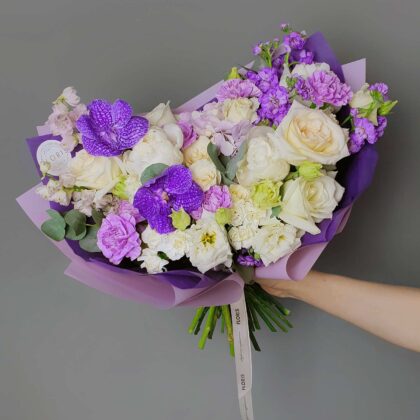The act of offering flowers to deities is a universal practice that transcends borders and cultures. Across different religions, flowers hold immense significance as symbols of purity, devotion, and reverence. In this article, we explore the diverse traditions of presenting flowers to deities in various religions, each carrying its unique symbolism and spiritual essence.
Hinduism Puja and Offering Flowers in Worship
In Hinduism, flowers play a central role in religious ceremonies and daily worship. Devotees offer vibrant blooms, such as marigolds and lotus flowers, to various deities.
In Hindu puja, the offerings hold deep symbolic meaning and are directly associated with the five elements of Nature.
- Offering water in Hindu puja represents the water element, signifying purity, cleansing, and the flow of life.
- Offering food, Prasad, bhog, or naivedya, along with sandal paste, saffron, or musk, represents the earth element, symbolizing
- nourishment, stability, and grounding.
- Offering flowers represents akasha or the whole space, representing beauty, fragrance, and the interconnectedness of all beings.
- Offering incense represents vayu or air, signifying the power of scent to purify and elevate the atmosphere during worship.
- Offering a lamp or diya represents tejas or the fire element, symbolizing illumination, energy, and the divine light within.
The process of offering five different puja items is based on Paramananda Tantra. It is offering the five elements through five representations.
The Profound Significance of Floral Offerings in Buddhism
In Buddhism, offering flowers is a common practice to pay respect to the Buddha and reflect on the impermanence of life. White lotus flowers, considered pure and untouched by the muddy waters they grow in, symbolize enlightenment. Devotees arrange colorful flower arrangements, known as “Bai Sri,” to honor the Triple Gem – the Buddha, Dhamma, and Sangha.
Symbolic of flowers in Christianity: Passion Flower “Espina de Cristo” – a passion of Jesus
In Christianity, flowers have a significant presence in religious ceremonies, especially during major celebrations like Easter and Christmas. But most deep symbolism we want to share with you, it is the story about the passion flower in Christianity. The passion in passion flower refers to the suffering of Jesus in Christian theology, originating from the Latin word “passio” meaning ‘suffering.’ During the 15th and 16th centuries, Spanish Christian missionaries found symbolic significance in the unique physical features of this plant related to the last days of Jesus and his crucifixion:
- The pointed tips of the leaves symbolize the Holy Lance.
- The tendrils represent the whips used in the flagellation of Christ.
- The ten petals and sepals represent the ten faithful apostles (excluding St. Peter, who denied Jesus three times, and Judas Iscariot, who betrayed him).
- The flower’s radial filaments, which can number more than a hundred and vary from flower to flower, represent the crown of thorns.
- The chalice-shaped ovary with its receptacle symbolizes the Holy Grail.
- The three stigmas represent three nails, and the five anthers below them represent five hammers or five wounds (four by the nails and one by the lance).
- The blue and white colors of many species’ flowers symbolize Heaven and Purity.
Additionally, the flower remains open for three days, symbolizing the three years of Jesus’ ministry.
Throughout Europe since the 15th century, the flower has been given names related to this symbolism. In Spain, it is known as “Espina
Offering Flowers – Act of Devolution
Across diverse religions, offering flowers to deities is a powerful and meaningful act of devotion. Each religion imbues this age-old practice with its unique symbolism, reflecting the deep spiritual connection between humanity and the divine.






